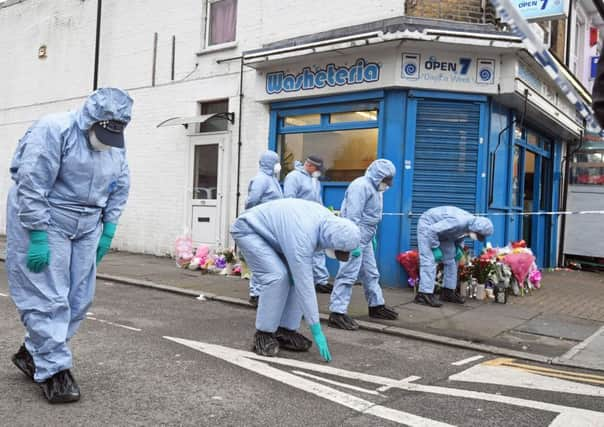Bill Carmichael: A violent reminder of police's real job


Just this week a 17-year-old girl was murdered in a random drive-by shooting in Tottenham, north London, and on the same day a 16-year-old died after being shot in the face a few miles away in Walthamstow.
A couple of days later, in east London, a man in his 20s was stabbed to death and a man in his 50s died after an assault in a bookmakers. There have been more than 50 murders in the capital in this year alone.
Advertisement
Hide AdAdvertisement
Hide AdIn a deeply depressing tipping point it was reported at the weekend that the murder rate in London in February and March this year had actually overtaken New York’s.
London is undoubtedly the worst example – with a 42 per cent rise in gun crime and a 24 per cent rise in knife crime – but it is not alone in witnessing worrying increases in violence.
For example in a single weekend of absolute carnage a few months ago there were no fewer than six stabbings in Sheffield city centre, and last month a young father was knifed to death in the tough Burngreave area of the city.
Not a week goes by without reports of stabbings and shootings in Yorkshire’s cities and elsewhere around the country.
Advertisement
Hide AdAdvertisement
Hide AdAnd this isn’t simply anecdotal but based on hard facts. According to figures released by the Office of National Statistics for the year up to September 2017, robbery offences were up 29 per cent, sex offences up 23 per cent, knife crime up 21 per cent and violent crime generally up 20 per cent.
Faced with what can only be described as escalating epidemic of violent crime, what exactly are the authorities doing about it? Not a fat lot, as it happens.
London’s Labour mayor Sadiq Khan, in charge of the capital’s policing, is busy calling for the introduction of more transgender toilets. I am sure in the city’s violent suburbs, where people are terrified of leaving their homes even in broad daylight, they speak of little else.
Inevitably, in an effort to dodge responsibility, the police and politicians point to the “savage cuts” and complain they “don’t have the resources” to deal with violent crime effectively.
Advertisement
Hide AdAdvertisement
Hide AdThis is palpable nonsense. This has absolutely nothing to do with resources. It is quite simply a matter of priorities.
Take for example South Yorkshire Police, which can utilise sufficient “resources” to send no fewer than 33 officers to watch a tree being chopped down and arrest a middle-aged woman for blowing a toy trumpet. Surely they can spare a few more officers to stop the bloodshed erupting on the city’s streets every weekend?
And there is no shortage of “resources” when it comes to officers dressing up in high heels and painting their nails – and yes, we are talking about male officers here – to publicise some fashionable cause or other.
And then there is the trendy obsession with “hate crime” and people being offensive on the internet.
Advertisement
Hide AdAdvertisement
Hide AdSurely the police have enough actual, real crime to deal with without scrambling officers every time someone suffers a mild case of hurt feelings because they read something they disagreed with on Twitter?
Last year Alison Saunders, who this week announced she was quitting after a disastrous tenure as head of the Crown Prosecution Service, launched a major crackdown on “social media hate crime”.
As a result, there has been an enormous increase in police time spent investigating social media “trolls”.
It was reported last October that more than 3,300 people had been arrested – more than nine a day – for social media activity in the previous year, an increase of nearly 50 per cent in two years. No shortage of “resources” there then.
Advertisement
Hide AdAdvertisement
Hide AdBut surely we are entitled to question that if the police have sufficient officers to look at literally hundreds of thousands of Facebook and Twitter posts, and arrest nine people a day, they can spare a few moments to investigate real crimes in the real world?
As I say, it is a matter of priorities. We as a society have to decide what is more important to us – a 16-year-old shot in the face and left to die in the gutter, or someone writing a mildly disobliging post on Facebook?
We make our choices and we get the police force we deserve.